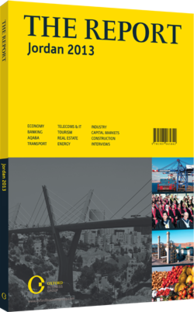OBG talks to Adel Kasaji, CEO, AB Invest

Interview: Adel Kasaji
What are the key components for developing a more sophisticated debt market in Jordan?
ADEL KASAJI: Currently, in the Jordanian debt market, there are 17 T-bills, two corporate bonds, 17 public entity bonds and 139 government bonds listed on the Amman Stock Exchange (ASE). The value of active government bonds alone is nearly JD9bn ($12.7bn); however, the val-ue of bonds traded between 2005 and 2012 inclusive was just JD12.6m ($17.7m). Clearly, much has to be done to improve bond-trading activity. There are four main players in any capital market – the legislator, the issuer, the investor and the invest-ment banks. Each one of these players can contribute to the creation of a more efficient capital market in Jor-dan. For example, we are awaiting amendments to the laws and regulations governing mutual funds as con-flicts in the current rules have prevented the establish-ment of new funds over the past few years. At the same time, issuers have to be encouraged to increase the use of debt instruments as a means of financing their oper-ations. Currently there are only two listed corporate bonds, but there are over 240 listed companies. A sukuk (Islamic bond) law might increase the interest of com-panies in the debt market. The current laws do not pre-vent retail investors from investing in corporate bonds, yet we see minimal retail interest in these assets. The role of investment banks and investment com-panies can only start when a combination of strong issue offerings, encouraging regulations and investor inter-ests meet. At that point, investment banks and com-panies will begin issuing bonds, marketing them and trading them. We feel that the industry has potential.
How can the financial sector create more oppor-tunities in the debt market?
KASAJI: The main starting point here is creating more mutual funds that invest in the local debt market. Most retail investors are too small to be able to invest in the bond market successfully and mutual funds grant them this chance. Creating investment opportunities that mix and match investments in the debt market with investments in the equity market will create a desirable diversification effect. Becoming more involved in the creation and marketing of sukuk would give investors yet another class of assets that adds not only diversi-fication, but that could attract a new class of investors that are keen on sharia compliance. Engaging the leg-islative branch to help develop the needed regulatory and legal framework should enhance creation, market-ing, selling, trading and investing in the debt market.
What measures should be implemented to enhance the role of mutual funds?
KASAJI: It all starts with resolving the issues with the current mutual funds law, which has contributed to there being only three active funds in Jordan. Once the legislation is revised, the investment industry will be able to create more funds, which can compete against each other for assets. This will increase the interest of investors as they get more investment options.
How would you characterise current market valu-ations and the factors determining them?
KASAJI: The market’s price-to-earnings ratio (P/E ratio) dropped from a high of 44 times in 2005 to a low of 14 times in 2009 before recovering in 2010 and 2011. The market’s P/E ratio currently stands at 16 times. While this is not the lowest valuation over the past few years, it remains on the low end. Meanwhile, the market’s price-to-book ratio stands at around 1.5 times, which is the lowest it has been since 2005 when it reached a high of 3.2 times. By definition, these valuations are driv-en by the value of the index, the earnings of the listed companies and the size of the shareholders’ equity of these firms, which is directly affected by net income. The decline in the valuations is a result of a drop in the general index and, to a lesser degree, growth in earn-ings. Despite the drop in the exchange’s valuations and the recovery in the GCC markets, the ASE remains an expensive option when compared to its regional peers.
You have reached the limit of premium articles you can view for free.
Choose from the options below to purchase print or digital editions of our Reports. You can also purchase a website subscription giving you unlimited access to all of our Reports online for 12 months.
If you have already purchased this Report or have a website subscription, please login to continue.

